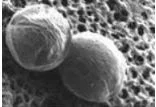Water pollution occurs when energy and other materials are released, degrading the quality of the water for other users. Water pollution includes all of the waste materials that cannot be naturally broken down by water.
Water Temperature
Water temperature is critical because it is an important quality in environmental parameters. It is important to measure water temperature. By doing so, we can see the characteristics of the water such as the chemical, biological, and physical properties of the water, as well as the possible health effects.
What is Chlorination?
What is the Purpose of Drinking Water Quality Guidelines/Regulations?
First off, it’s important to understand the discrepancy between the terms “guideline” and “regulation”, as this difference is critically important. The term guideline, can be defined as follows: “a line by which one is guided: an indication or outline of policy or conduct” (MerriamWebster, 2008). Meaning, a guideline is often a benchmark that should be followed, but technically, isn’t lawfully required to be followed.
Detailed Campylobacter
Detailed Cryptosporidium
Detailed Escherichia Coli
Escherichia coli, also referred to as E. coli, is a type of fecal coliform bacteria that is found in the intestines of healthy warm-blooded animals and humans. Most E. coli strains are harmless and serve a useful function in the body by stopping the growth of harmful bacteria species and by making necessary vitamins. However, some strains can be opportunistic pathogens, while others can cause gastrointestinal illness in healthy humans when ingested.












